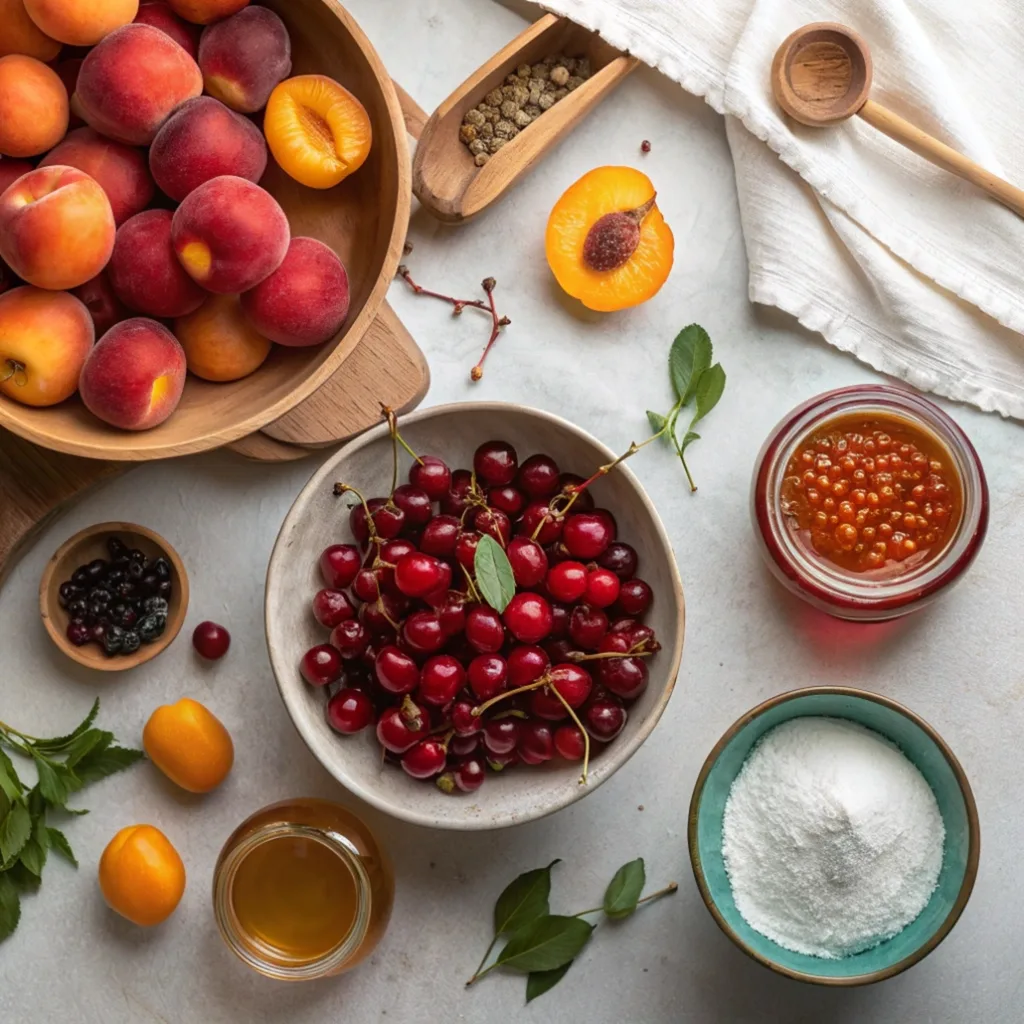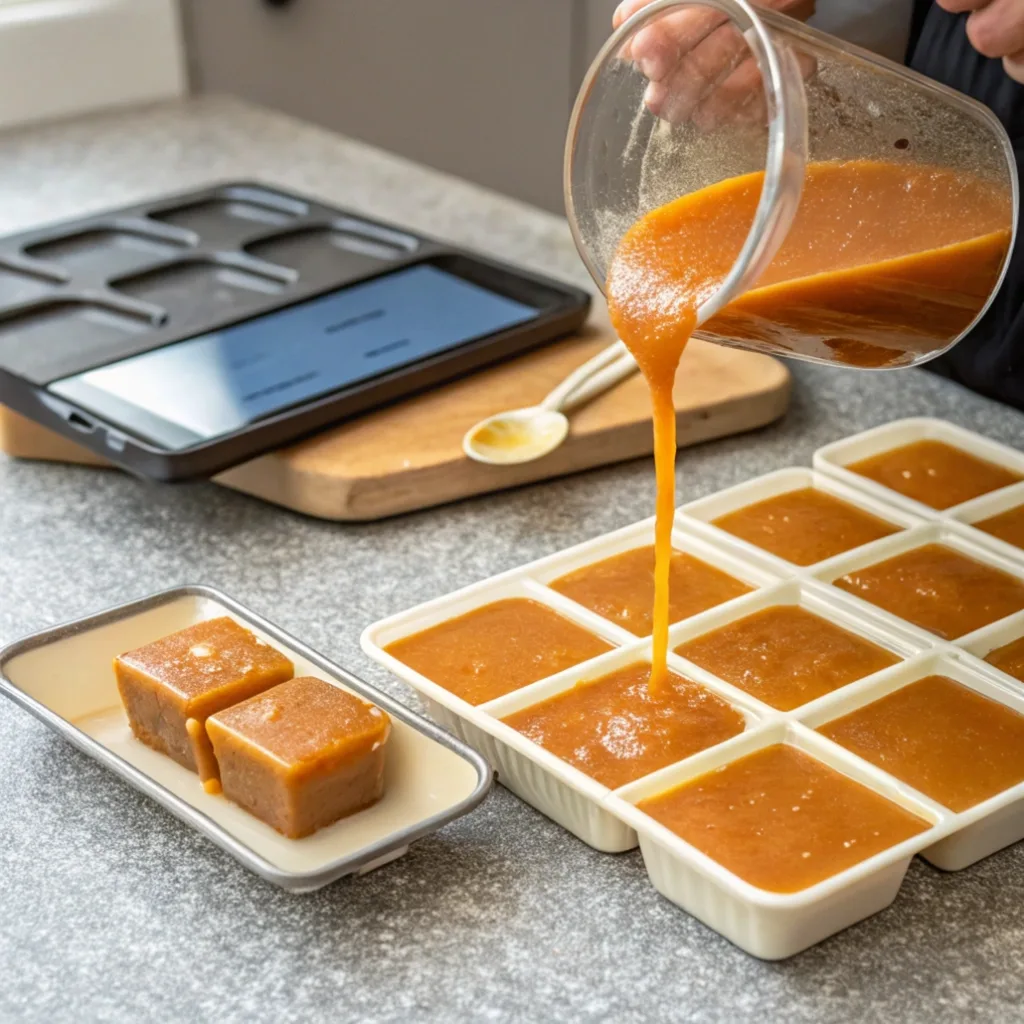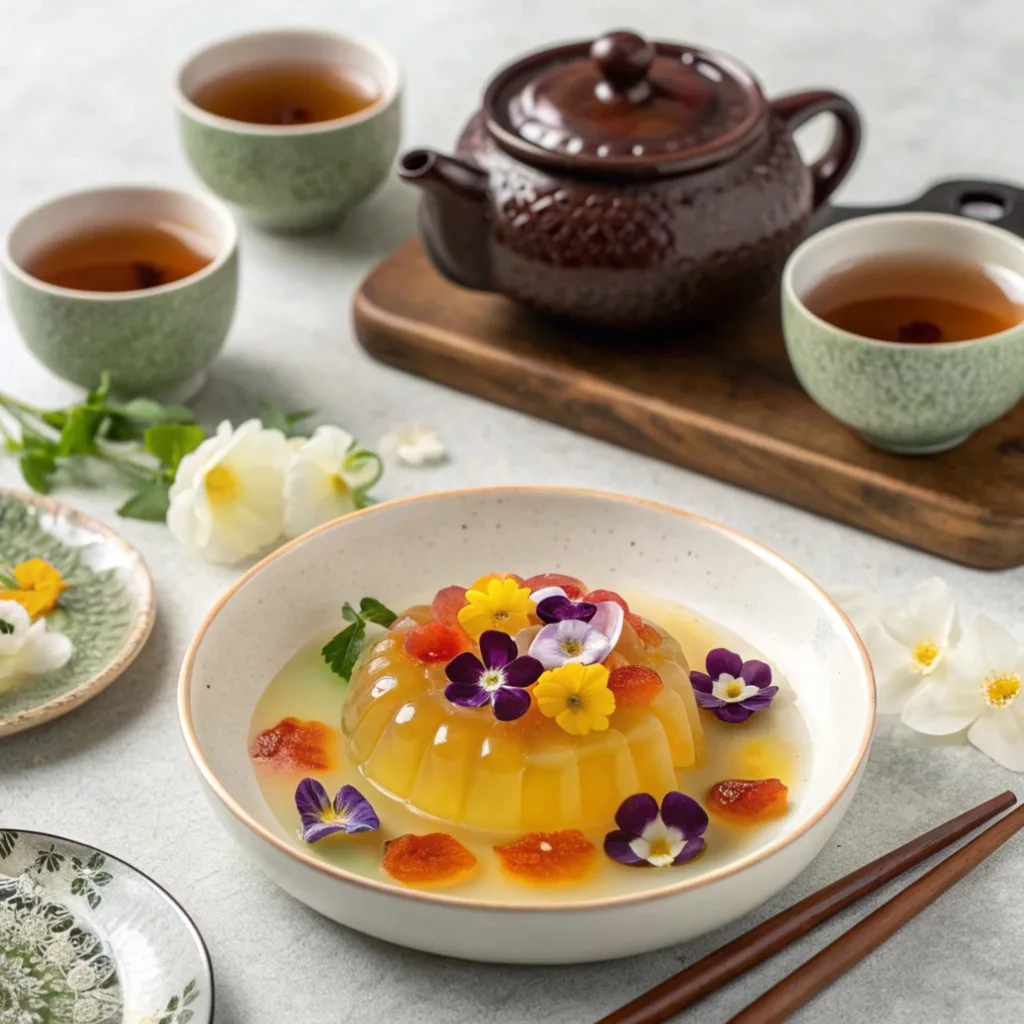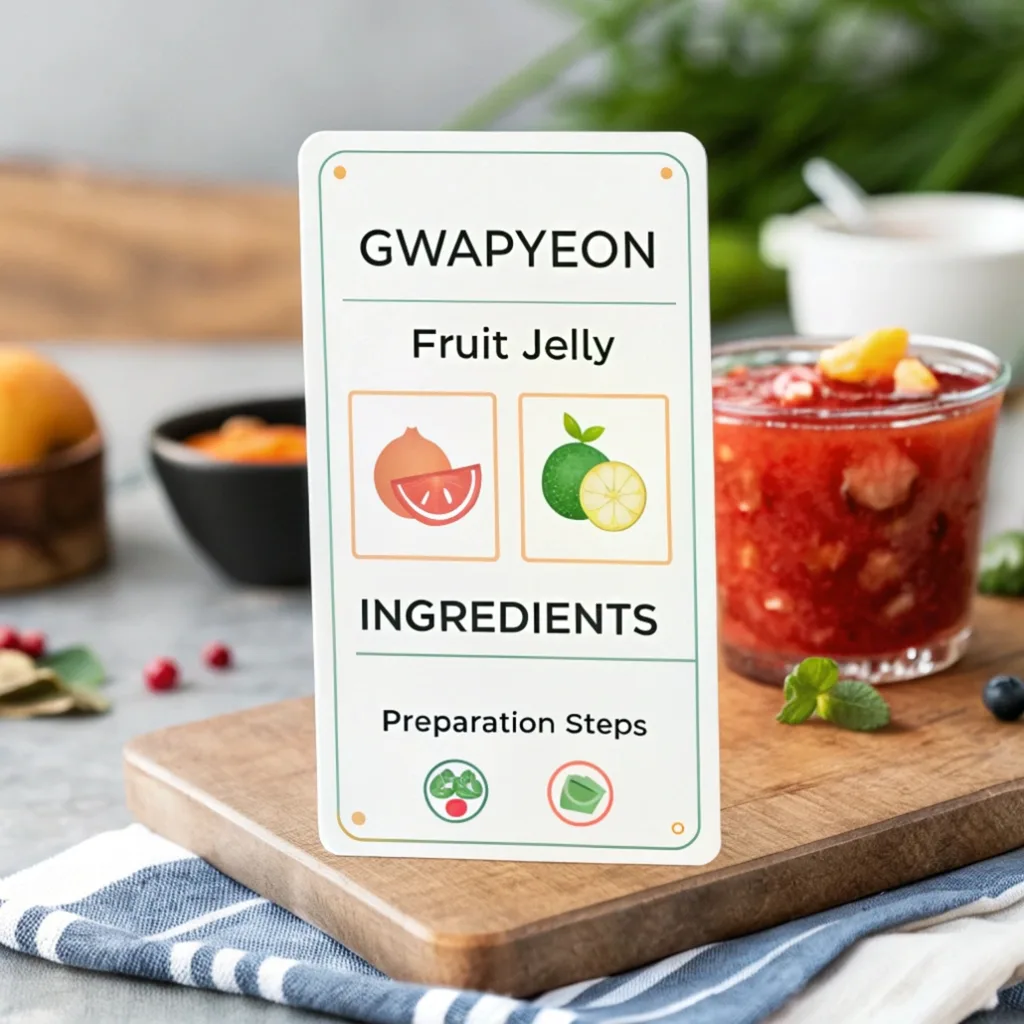Welcome to the vibrant world of gwapyeon fruit jelly Korean dessert, a timeless gem that melds nature’s best with royal elegance. In this article, we’ll uncover its rich heritage, offer a passionate glimpse into Korean culinary artistry, reveal traditional versus modern methods, sprinkle pro tips for home preparation, and answer your top questions—like what royal dessert inspired this treat, how jelly fits into Korean cuisine, and how to craft your own fruit jelly masterpiece. Set your expectations: beauty, flavor, and cultural delight in every bite.
The Story & Origin of Gwapyeon
A Royal Legacy Behind the Jelly
I still remember first encountering gwapyeon fruit jelly Korean dessert during a traditional banquet—it glowed like a gem, its deep berry tones catching the light. It wasn’t just beautiful; it whispered of lineage and time. Crafted from seasonal fruits like cherries, apricots, and omija, this dessert was a signature of royal tables in the Joseon dynasty, prized for its elegance and color.
Historians note that such fruit‐based jellies featured prominently in royal banquets, an edible tribute to the seasons and the heavens. These confections belonged to Hangwa, traditional Korean sweets often reserved for celebrations and court life. I say you’ll love learning more about hangwa heritage or browse our roundup of seasonal Korean desserts that extend this story to modern tastes.
Simple Ingredients, Regal Impact
The magic starts with sour, pectin-rich fruits—think quince, hawthorn, or black raspberries—boiled into juice, sweetened with honey or sugar, then thickened with starch or buckwheat flour. Once cooled, it’s cut into jewel-like squares. Less complicated than it sounds, yet this combination delivers beauty, texture, and depth.
What do we love about these ingredients? They’re seasonal, wholesome, and vivid. You taste the rhythm of Korean seasons. Plus, translating this ancient elegance into your kitchen feels like a culinary love letter across centuries.
Printgwapyeon fruit jelly Korean dessert – Elegant Seasonal Jewel of Flavor
A jewel-toned gwapyeon fruit jelly Korean dessert made from seasonal fruits, agar, and honey — a traditional royal court delicacy that’s as beautiful as it is refreshing.
- Prep Time: 15 minutes
- Cook Time: 10 minutes
- Total Time: 25 minutes
- Yield: 8 servings
- Category: Dessert
- Method: No Bake
- Cuisine: Korean
Ingredients
2 cups seasonal fresh fruit (grapes, strawberries, blueberries, or persimmons), peeled and sliced
2 cups water
2 tbsp agar powder (or kanten)
4–5 tbsp sugar or honey (adjust to taste)
1 tsp lemon juice (optional, for brightness)
Pinch of salt
Edible flowers or mint leaves for garnish (optional)
Instructions
1. Prepare the fruits by peeling, slicing, or shaping them into decorative pieces; set aside.
2. In a saucepan, combine water and agar powder; bring to a gentle boil while stirring.
3. Add sugar or honey, lemon juice, and salt; stir until dissolved completely.
4. Allow the mixture to cool slightly before pouring a thin layer into a mold or individual cups.
5. Arrange the fruit pieces evenly, then pour the remaining agar mixture to cover the fruit.
6. Let set at room temperature for 15–20 minutes, then refrigerate for 1–2 hours until firm.
7. Unmold carefully and garnish with edible flowers or mint leaves before serving.
8. Serve chilled as a refreshing gwapyeon fruit jelly Korean dessert.
Notes
For authentic flavor, choose fruits in season such as cherries, quince, or omija berries.
Use clear molds or glass cups to showcase the dessert’s vibrant colors.
Agar sets more firmly than gelatin; adjust agar quantity for a softer texture.
This gwapyeon fruit jelly Korean dessert pairs perfectly with green tea or barley tea.
Store covered in the refrigerator for up to 3 days.
Ingredients & Traditional Method
Seasonal Fruits and Natural Sweetness
Every successful gwapyeon starts with in-season fruits: cherries, apricots, omija, quince, blueberry, and even mountain hawthorn. Their natural pectin forms the base, so there’s less reliance on artificial thickeners. We preserve more flavor this way. This is why gwapyeon served in royal courts doubled as a feast for the eyes and a seasonal celebration.
You’ve likely seen modern versions that combine fruit with milk or creams, but the classic hinge is simple—fruit, sweetener, and a thickener. If you’re intrigued by more royal Korean sweets, our page on authentic fruit jellies dives deeper into ingredient origins.
Starch, Flour, or Just Fruit?
Traditionally, starch or buckwheat flour helped every square hold itself. Just enough thickener created a firm, yet tender bite. Nowadays, some recipes call for agar or gelatin for convenience—but the flour route feels more authentic. Your choice depends on availability and texture preference. Either way, that silky finish remains the same.
Sprinkle in a bit of honey or sugar—adjust based on how tart your fruit juice is. This balance is what made gwapyeon a showstopper in royal courts and modern kitchens alike.

Modern Twists & Home Cooking
Contemporary Variations That Win Hearts
Now, lovers of modern healthy desserts have reimagined gwapyeon with fresh flair—like fruit layers set in clear agar, or mini molds showcasing fruit cross-sections. There’s even a fusion version with strawberry milk-infused layers (yes, that answers “What is the Korean dessert with fruit and strawberry milk?”). While not strict tradition, these versions honor flavor and visual delight.
Looking to expand your dessert repertoire? Head over to our modern healthy desserts section for more inspiring twists.
Tips to Nail It at Home
- Choose fresh, ripe fruit for maximum flavor.
- Don’t over‐cook the juice; just enough to concentrate flavor and extract pectin.
- Stir gently when adding starch to avoid clumps.
- Work quickly into molds and refrigerate to set firmly.
- Slice with a hot, dry knife for clean edges.
These steps ensure your homemade jelly feels as refined as that red-hued beauty from royal banquets.
Serving, Presentation & Cultural Significance
Making it Beautiful and Joyful
Gwapyeon is as much about presentation as it is about taste. Arrange pieces on porcelain, garnish with edible flowers or quince petals, and serve alongside tea. In royal tradition, they were meticulously presented—sometimes arranged in mosaic patterns. Want themed inspiration? Peek at our PeakFit Recipes Korean sweets gallery for ideas on elevating your dessert table.
A Cultural Sweet that Lasts
Beyond its taste, gwapyeon resonates emotionally. It’s a seasonal tribute, a nod to Korea’s rich culinary canvas, and a dessert both simple and elegant. Sharing it is sharing heritage—especially when made with intention. As modern cooks, we connect the past and present with each bright, fruity square.
1. What is Gwapyeon Fruit Jelly Korean Dessert?
Gwapyeon fruit jelly Korean dessert is a delicate, jewel-like confection made from seasonal fruits, sweetened honey, and agar powder. Originating from Korean royal court cuisine, this dessert is known for its translucent appearance and soft, chewy bite. Unlike gelatin-based jellies, gwapyeon uses agar, a plant-based thickener, making it suitable for vegetarian diets. Each piece of gwapyeon fruit jelly Korean dessert often features colorful layers, natural fruit flavors, and a refreshing taste that perfectly complements tea ceremonies or festive gatherings. This treat reflects Korean culinary artistry, where presentation and flavor harmony are equally important.
2. History and Cultural Significance of Gwapyeon
The gwapyeon fruit jelly Korean dessert dates back to the Joseon Dynasty, where it was served in royal palaces as a symbol of elegance and prosperity. Traditionally prepared during important celebrations, gwapyeon represented the changing of seasons, with fruits chosen according to availability and symbolism. For instance, persimmons signify longevity, while grapes symbolize abundance. Even today, gwapyeon fruit jelly Korean dessert holds cultural importance, often appearing at Chuseok (Korean Thanksgiving) and Seollal (Lunar New Year) tables. Its intricate appearance and naturally sweet taste make it a treasured dessert across generations.

3. Key Ingredients for Authentic Gwapyeon Fruit Jelly
To make gwapyeon fruit jelly Korean dessert, the essential ingredients include agar powder (also known as kanten), seasonal fresh fruits like grapes, strawberries, or persimmons, honey or sugar, and sometimes natural extracts like yuzu or green tea for flavor. The use of agar instead of gelatin gives the gwapyeon a firmer yet still tender texture. The fruits are often peeled and cut into elegant shapes before being set in the jelly, creating a beautiful mosaic effect. For a truly authentic gwapyeon fruit jelly Korean dessert, quality and freshness of ingredients are essential.
4. Step-by-Step Guide to Making Gwapyeon at Home
Making gwapyeon fruit jelly Korean dessert at home is simpler than it looks. First, dissolve agar powder in water and bring it to a gentle boil. Sweeten the mixture with honey or sugar, then allow it to cool slightly before adding prepared fruits. Arrange fruits in a mold or small cups, pour the agar mixture over them, and let it set at room temperature or in the fridge. Once firm, slice and serve. By following this method, you can recreate the classic gwapyeon fruit jelly Korean dessert in your own kitchen, adding personal touches with different fruits or flavors.
5. Flavor Variations for Gwapyeon
While traditional gwapyeon fruit jelly Korean dessert uses seasonal fruits, modern adaptations experiment with unique combinations. Mango and passion fruit give a tropical twist, while blueberry and lavender create a subtle floral aroma. Matcha powder can be added to the agar mix for an earthy flavor, contrasting beautifully with citrus fruits. For festive occasions, layering different colored jellies makes the gwapyeon fruit jelly Korean dessert even more visually striking. The versatility of gwapyeon means you can tailor flavors to suit any taste or season.
6. Health Benefits of Gwapyeon Fruit Jelly Korean Dessert
One of the advantages of gwapyeon fruit jelly Korean dessert is its light, low-calorie nature. Since it’s made with agar, it contains no animal products and is high in fiber, aiding digestion. Fresh fruits provide natural vitamins, antioxidants, and hydration, making it a refreshing choice during warmer months. Compared to heavy cream-based desserts, gwapyeon offers a guilt-free treat that still feels indulgent. Many people enjoy it as a mindful snack, appreciating both its beauty and nutritional value.
7. Serving and Presentation Tips
Presentation is key when serving gwapyeon fruit jelly Korean dessert. For an elegant display, slice the jelly into diamond or flower shapes and place them on lacquer trays or ceramic plates. Garnish with edible flowers or mint leaves for added beauty. If serving at a modern gathering, you can plate gwapyeon in individual glass cups to showcase its colorful layers. Pairing it with green tea or barley tea enhances its delicate sweetness, making the experience even more memorable.
8. Where to Find or Buy Gwapyeon
While homemade versions are popular, gwapyeon fruit jelly Korean dessert can also be found in specialty Korean dessert shops, tea houses, and select online stores. In South Korea, you might spot it at traditional markets, especially during holidays. Some artisanal brands ship gwapyeon internationally, packaging it in gift boxes that highlight its vibrant beauty. Whether purchased or homemade, gwapyeon fruit jelly Korean dessert remains a unique treat worth experiencing for both its taste and cultural heritage.

FAQs
1. What was the dessert of the Joseon era?
Royal courts featured delicacies like gwapyeon—fruit jellies made from seasonal fruits, honey or sugar, and starch, celebrated for their color, texture, and seasonality.
2. What is the Korean dessert with fruit and strawberry milk?
That’s a modern spin often inspired by fruit jellies, layering fruit-based jelly with strawberry-infused milk or cream—while not traditional, it’s a delightful contemporary fusion.
3. What is jelly in Korea?
Korea’s ‘jelly’ includes gwapyeon (fruit jellies made with starch or buckwheat), and modern variants with agar or gelatin, served as a light dessert or garnish.
4. How to make fruit jelly sweets?
Boil seasonal fruit into juice, sweeten to taste, stir in starch or buckwheat flour (or agar), pour into molds, chill until firm, and slice.

Conclusion
There you have it—gwapyeon fruit jelly Korean dessert, with roots in royal tradition but your kitchen-friendly too. Rich fruit, natural sweeteners, simple binding agents, and love are all it takes. Whether you honor the past with classic fruit choices or spice things up with strawberry milk layers, every square tells a story. So gather your seasonal fruit, don your apron, and let this jeweled dessert brighten your day.
Craving more? Discover irresistibly crispy, guilt-free treats in our Air Fryer Recipe Collection!


